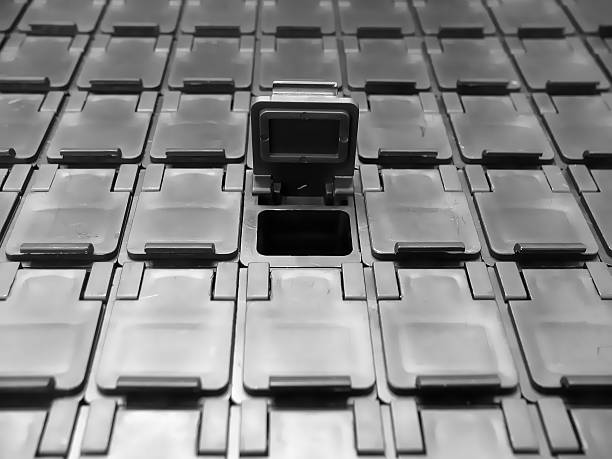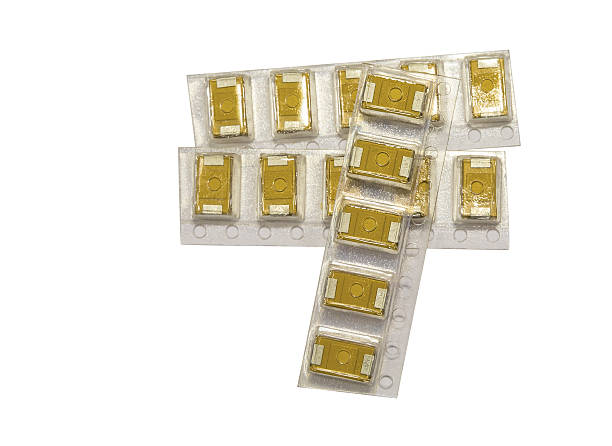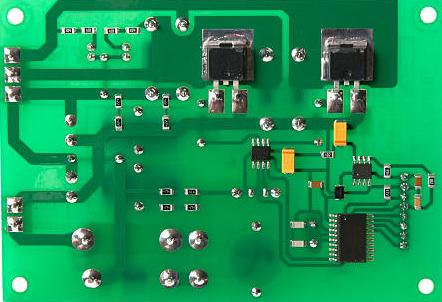Content Menu
● Introduction to Surface Mount Devices
● The Evolution of SMD Technology
● Advantages of Surface Mount Devices
>> Space Efficiency
>> Improved Performance
>> Automated Assembly
>> Dual-Sided Assembly
● Types of Surface Mount Devices
>> Resistors
>> Capacitors
>> Integrated Circuits (ICs)
>> Inductors
>> Connectors
● The Manufacturing Process of SMDs
>> Design and Layout
>> Solder Paste Application
>> Component Placement
>> Reflow Soldering
>> Inspection and Testing
● Applications of Surface Mount Devices
>> Consumer Electronics
>> Automotive Electronics
>> Industrial Equipment
>> Medical Devices
>> Telecommunications
● Challenges and Considerations
>> Handling and Placement
>> Repair and Replacement
>> Thermal Management
● Future Trends in SMD Technology
>> Miniaturization
>> Enhanced Performance
>> Increased Automation
● Conclusion
● Related Questions
>> 1. What are the main differences between SMD and through-hole components?
>> 2. How are SMDs soldered onto PCBs?
>> 3. What types of SMD components are commonly used?
>> 4. What are the advantages of using SMD technology?
>> 5. What challenges are associated with SMDs?
Surface Mount Devices (SMDs) represent a significant advancement in the field of electronics, allowing for the efficient assembly of electronic components onto printed circuit boards (PCBs). This article will explore the fundamentals of SMDs, including their definition, advantages, types, manufacturing processes, applications, and future trends. By the end, readers will have a comprehensive understanding of SMD technology and its impact on modern electronics.

Introduction to Surface Mount Devices
Surface Mount Devices are electronic components that are mounted directly onto the surface of a PCB. This method contrasts with traditional through-hole technology, where components are inserted into holes drilled into the board. The adoption of SMD technology has been driven by the need for smaller, more efficient electronic devices that can accommodate the increasing complexity of modern circuits. SMDs are characterized by their compact size, which allows for a higher density of components on a single board, thereby optimizing space and enhancing performance.
The Evolution of SMD Technology
The origins of SMD technology can be traced back to the 1960s when IBM first utilized surface-mounted components in its digital computers for NASA's space shuttles. Over the years, the technology has evolved significantly, leading to widespread adoption across various industries. The shift from through-hole to surface mount technology has been fueled by the demand for smaller, lighter, and more efficient electronic devices, which are now commonplace in consumer electronics, automotive systems, and industrial applications.
Advantages of Surface Mount Devices
Space Efficiency
One of the most significant advantages of SMDs is their ability to save space on PCBs. The compact nature of these components allows for a greater number of devices to be placed on a single board, which is particularly beneficial in applications where size is a critical factor, such as smartphones, tablets, and wearable technology.
Improved Performance
SMDs typically feature shorter leads compared to through-hole components, which reduces the inductance and resistance in the circuit. This characteristic is particularly advantageous in high-frequency applications, where signal integrity is paramount. The reduced lead length also minimizes the potential for electromagnetic interference, further enhancing performance.
Automated Assembly
The assembly process for SMDs is highly automated, which significantly reduces labor costs and increases production speed. Automated pick-and-place machines can quickly and accurately position SMDs on PCBs, followed by soldering processes such as reflow soldering. This automation not only improves efficiency but also enhances the consistency and reliability of the assembly process.
Dual-Sided Assembly
Another advantage of SMD technology is the ability to mount components on both sides of a PCB. This capability allows for more complex circuit designs and further optimizes space utilization, making it possible to create intricate electronic devices that would be challenging to assemble using traditional methods.
Types of Surface Mount Devices
SMDs encompass a wide range of electronic components, each designed for specific applications. Here are some common types of SMDs:
Resistors
SMD resistors are available in various sizes and power ratings. They are typically marked with a code indicating their resistance value, making them easy to identify during assembly and testing.
Capacitors
SMD capacitors are used for energy storage and filtering applications. They can be ceramic, tantalum, or electrolytic, each with distinct characteristics that make them suitable for different uses.
Integrated Circuits (ICs)
SMD ICs are compact versions of traditional integrated circuits, designed specifically for surface mounting. They include microcontrollers, operational amplifiers, and other complex components that are essential for modern electronic devices.
Inductors
SMD inductors are used in filtering applications and are available in various sizes and inductance values. They play a crucial role in managing current flow and reducing noise in electronic circuits.
Connectors
SMD connectors facilitate the connection of external devices to the PCB. They come in various forms, including headers and sockets, and are essential for establishing communication between different components of an electronic system.
The Manufacturing Process of SMDs
The manufacturing process of SMDs involves several key steps, each critical to ensuring the quality and reliability of the final product:
Design and Layout
The first step in the manufacturing process is designing the PCB layout. This involves strategically placing the SMDs to optimize space and performance while ensuring that the electrical connections are efficient and effective.

Solder Paste Application
Solder paste is applied to the PCB pads where the SMDs will be placed. This is typically done using a stencil to ensure accuracy and consistency in the application of the solder paste.
Component Placement
Automated pick-and-place machines are used to position the SMDs onto the solder paste-covered pads. This process is highly precise, ensuring that each component is accurately placed according to the design specifications.
Reflow Soldering
Once the components are placed, the PCB is heated in a reflow oven. This process melts the solder paste, creating a strong electrical connection between the SMDs and the PCB. The reflow process is critical for ensuring the reliability of the solder joints.
Inspection and Testing
After soldering, the PCBs undergo inspection and testing to ensure that all components are correctly placed and functioning as intended. This step is essential for identifying any defects or issues that may affect the performance of the final product.
Applications of Surface Mount Devices
SMDs are utilized in a wide range of applications across various industries, including:
Consumer Electronics
Devices such as smartphones, tablets, and laptops heavily rely on SMD technology for their compact designs and high performance. The ability to integrate numerous components into a small form factor is crucial for meeting consumer demands for portability and functionality.
Automotive Electronics
Modern vehicles incorporate SMDs in various systems, including engine control units, infotainment systems, and safety features. The reliability and efficiency of SMDs make them ideal for the demanding environments found in automotive applications.
Industrial Equipment
SMDs are used in industrial machinery for control systems, sensors, and communication devices. Their robustness and compactness are essential for ensuring the efficient operation of complex industrial processes.
Medical Devices
In the medical field, SMDs are crucial for the development of compact and efficient diagnostic and monitoring equipment. The precision and reliability of SMD technology are vital for ensuring the safety and effectiveness of medical devices.
Telecommunications
Telecommunication devices utilize SMDs for their compactness and reliability, which are essential for maintaining high-speed data transmission. The ability to integrate multiple functions into a single device is a significant advantage in this rapidly evolving industry.
Challenges and Considerations
While SMDs offer numerous advantages, there are also challenges associated with their use:
Handling and Placement
SMDs are smaller and more delicate than traditional components, requiring careful handling during assembly. The risk of damage during placement or soldering is higher, necessitating specialized equipment and training for assembly personnel.
Repair and Replacement
Repairing SMDs can be more challenging than through-hole components due to their size and the complexity of the PCB layout. Specialized tools and techniques are often required to replace or repair SMDs, which can increase maintenance costs.
Thermal Management
SMDs can generate heat during operation, necessitating effective thermal management solutions to prevent overheating. Proper design considerations must be made to ensure that heat dissipation is adequately addressed in the final product.
Future Trends in SMD Technology
The future of SMD technology looks promising, with several trends emerging that will shape its development:
Miniaturization
As electronic devices continue to shrink, SMDs will evolve to become even smaller and more efficient. This trend will drive innovation in materials and manufacturing processes, enabling the creation of increasingly compact electronic components.
Enhanced Performance
Advancements in materials and manufacturing processes will lead to SMDs with improved performance characteristics. This includes higher speed, greater reliability, and enhanced functionality, which will be essential for meeting the demands of future electronic applications.
Increased Automation
The trend towards automation in manufacturing will continue, making the assembly of SMDs faster and more cost-effective. As technology advances, we can expect to see even more sophisticated automated systems that enhance the efficiency and accuracy of SMD assembly.
Conclusion
Surface Mount Devices have transformed the landscape of electronics manufacturing, offering numerous advantages in terms of size, performance, and assembly efficiency. As technology continues to advance, SMDs will play an increasingly vital role in the development of compact and high-performance electronic devices. Understanding the basics of SMDs is essential for anyone involved in electronics design and manufacturing, as these components are integral to the functionality and reliability of modern electronic systems.

Related Questions
1. What are the main differences between SMD and through-hole components?
SMD components are mounted directly on the surface of PCBs, while through-hole components require leads to be inserted into holes. SMDs are generally smaller and allow for higher component density.
2. How are SMDs soldered onto PCBs?
SMDs are typically soldered using a reflow soldering process, where solder paste is applied to the PCB, components are placed, and then the assembly is heated to melt the solder.
3. What types of SMD components are commonly used?
Common SMD components include resistors, capacitors, integrated circuits, inductors, and connectors.
4. What are the advantages of using SMD technology?
Advantages include space efficiency, improved performance, automated assembly, and the ability to mount components on both sides of a PCB.
5. What challenges are associated with SMDs?
Challenges include handling and placement difficulties, repair and replacement complexities, and thermal management issues.




















